As a wine enthusiast, you know that your prized wine collection deserves the best storage conditions to preserve its exquisite taste and aroma. But did you know that the secret to optimal wine storage lies in maintaining the perfect wine fridge temperature?
Step into the world of wine storage and discover how to elevate your wine experience by understanding the crucial role of temperature, ideal settings for different temperatures and wine types, and the benefits of single-zone and dual-zone wine fridges.
Let us guide you through the art of wine temperature mastery!
Short Summary
- Understanding the ideal wine fridge temperature range of 40°F to 65°F is essential for preserving quality and preventing premature ageing.
- The optimal storage temperatures for different types of wines vary, with reds and stronger wines requiring higher temperatures than whites and sparkling wines.
- Regularly monitoring temperature levels as well as proper placement, installation, cleaning, maintenance are all key factors in maintaining an optimal wine fridge environment.
Understanding Wine Fridge Temperature
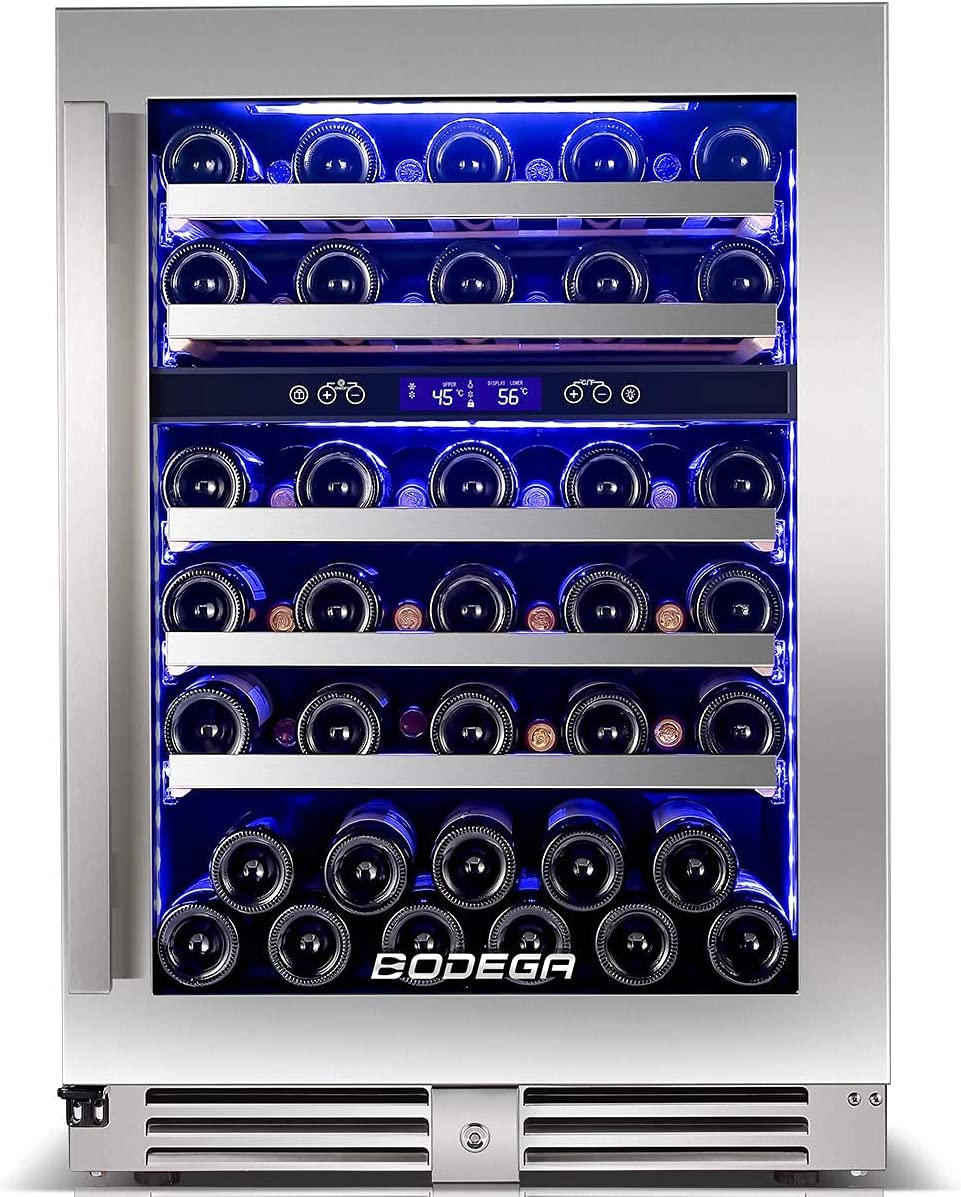
Temperature plays a pivotal role in wine storage as it impacts the chemical reactions occurring within the wine, influencing its flavour, aroma, and texture.
A wine fridge is the most advantageous wine storage solution for most individuals, providing a stable environment and ideal temperature range between 40° Fahrenheit and 68° Fahrenheit.
The Role of Temperature in Wine Storage
The ideal wine storage temperature range is 52-57°F (11-14°C). Storing wine at temperatures exceeding 70°F (21°C) will cause it to age rapidly, resulting in the loss of its aromas and flavours.
On the other hand, storing wine at temperatures below the ideal range may impede its maturation, while excessively warm temperatures may lead to premature ageing.
The temperature of the wine fridge should not be too low. If it is, ice particles will form and push the wine out through the cork. Moreover, rapid temperature fluctuations can cause wine cork contraction and expansion, leading to oxygen seepage and premature ageing.
Factors Influencing Wine Fridge Temperature
In addition to temperature, other factors such as humidity, light, and vibrations can affect the ideal wine fridge temperature. A humidity level of 70% is recommended for wine storage, as it prevents the cork from drying out and maintains a proper seal.
When it comes to lighting, LED lights or incandescent bulbs are suggested, as they produce minimal heat and do not emit harmful ultraviolet rays that can damage the wine.
A thermo-hygrometer can be employed to track humidity levels, ensuring that your wine collection is stored under optimal conditions.
Ideal Wine Fridge Temperatures for Different Wine Types
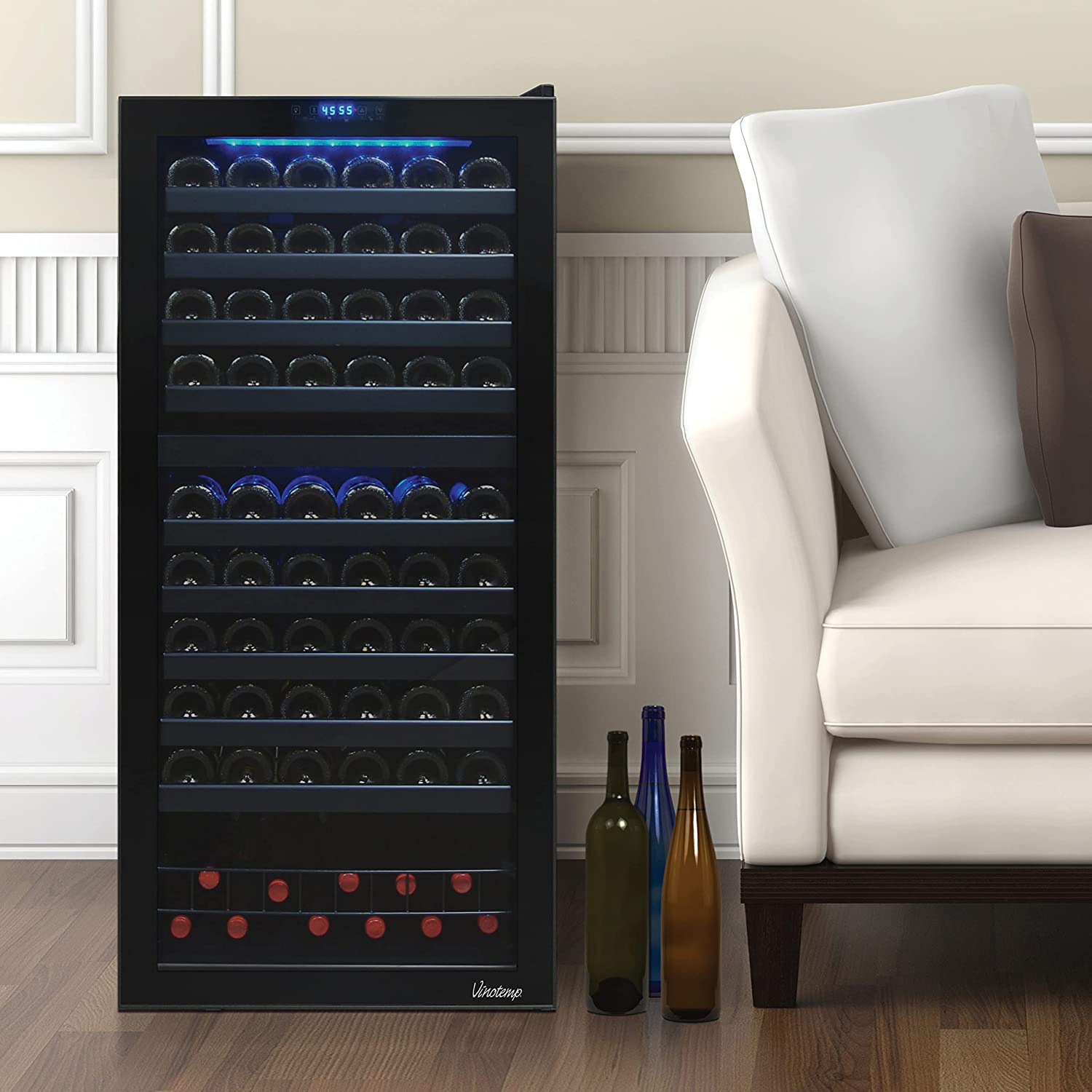
Knowing the ideal wine fridge temperatures for different wine types is essential for preserving their unique characteristics. The general rule of thumb is that the darker and stronger the wine, the higher the storage temperature.
Let's dive into the specific temperature recommendations for red, white, and sparkling wines.
Red Wine Fridge Temperature
Red wines should be stored at 55-64°F (13-18°C) to preserve their complexity and tannin structure. In a single-zone wine fridge, it is recommended to set the temperature to store wines at 55°F (13°C).
Full-bodied red wines, such as Cabernet Sauvignon, benefit from slightly warmer storage temperatures of 66-67°F (19-20°C).
White Wine Fridge Temperature
White wines should be stored at 45-55°F (7-13°C) to maintain their crispness and freshness. Full-bodied white wines, like Chardonnay, are best stored at the same temperature of 52-55°F (11-13°C), while light-bodied white wines, such as Sauvignon Blanc, thrive at slightly cooler temperatures of 46-48°F (8-9°C).
When storing white wines, it is important to keep in mind the type of wine and the desired flavour profile. Full-bodied white wines should be stored at a slightly higher temperature than light-bodied wines, as this will increase the quality of the wines.
Sparkling Wine Fridge Temperature
Sparkling wines, such as Champagne and Prosecco, should be stored at 40-45°F (5-7°C) to retain their effervescence and aromas.
The key to preserving optimal sparkling wine fridge temperature is consistency; it is advised to keep sparkling wine refrigerators at a consistent 50°F (10°C) and away from direct sunlight.
Single-Zone vs. Dual-Zone Wine Fridges
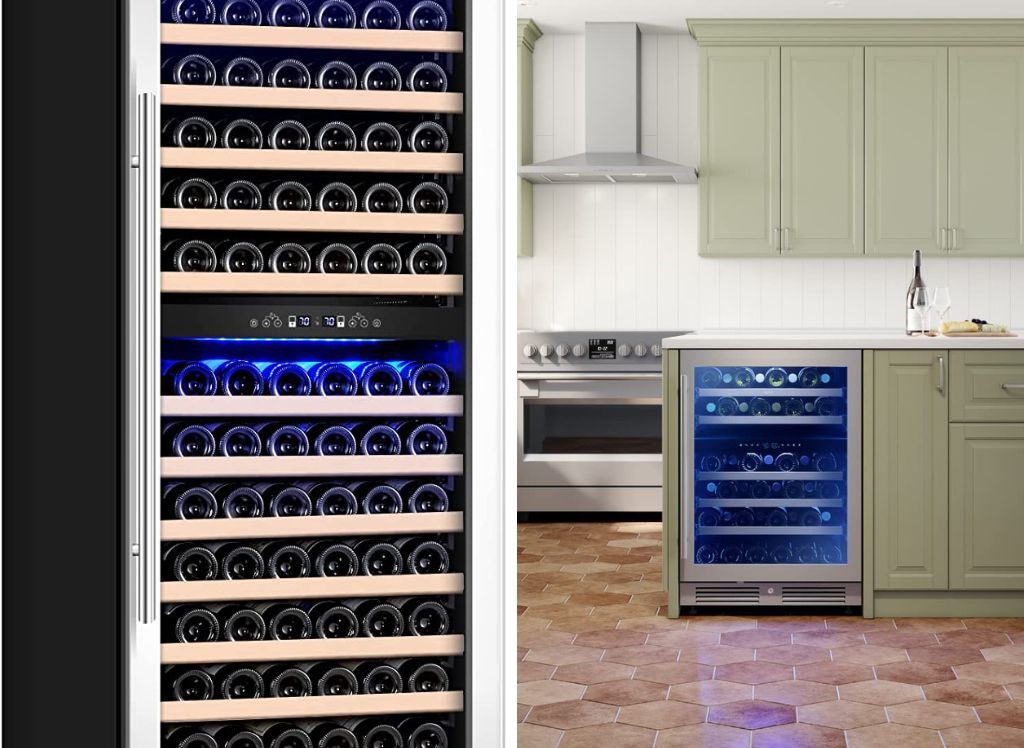
Choosing between a single-zone and a dual-zone wine fridge depends on your wine collection and personal preferences.
Single-zone wine fridges offer one temperature setting, while dual-zone wine fridges provide two temperature settings in one appliance, allowing for the full storage space of different varieties of wine at their optimal temperatures.
Let's explore the pros and cons of both single-zone and dual-zone wine fridges.
Single-Zone Wine Fridges
Single-zone wine fridges are simpler in design and operation, providing only one temperature setting for all the wine stored inside.
They are generally more economical and easier to use compared to dual-zone wine fridges. The recommended temperature for a single-zone wine fridge is 53.6°F - 57.2°F (12-14°C), which is suitable for most wines.
However, single-zone wine fridges may not cater to the specific temperature needs of certain wine varieties.
Dual-Zone Wine Fridges
Dual-zone wine fridges offer two temperature settings in one appliance, allowing for warmer temperatures in the lower part and colder temperatures in the upper zone.
This flexibility permits the keeping of various types of wine at their optimal temperatures, catering to the needs of diverse wine collections.
It is recommended that one dual zone wine cooler should be set at 55°F (13°C) and the other at 52°F (11°C). However, dual-zone wine fridges can be more expensive and may require more maintenance due to their added complexity.
Tips for Maintaining Optimal Wine Fridge Temperature
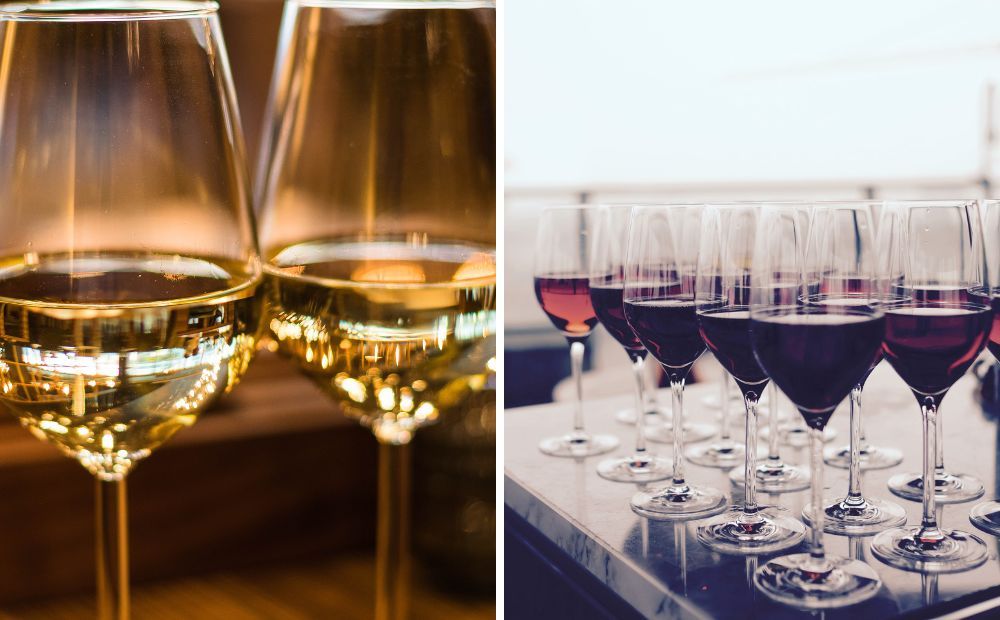
Keeping your wine fridge at the perfect temperature is crucial for preserving your wine collection's quality.
Here are some practical tips for ensuring the ideal temperature, from proper placement and installation of wine coolers to regular temperature monitoring and wine fridge maintenance.
Proper placement is key to maintaining the ideal temperature. Place your wine fridge in a cool, dark area away from direct sunlight and heat sources. Make sure the area is well-maintained.
Proper Placement and Installation
Firstly, it is essential to place your wine fridge away from direct sunlight and sources of vibration, as these factors can affect the temperature and potentially damage your wine.
Ensure that your wine fridge is level and secure, with sufficient ventilation to prevent overheating.
Maintain a few inches of clearance between the unit and the wall for proper air circulation, and have built-in units fitted professionally to ensure correct installation.
Regular Temperature Monitoring
Monitor the temperature of your wine fridge regularly to ensure that it remains within the optimal temperature range of 45-65°F (7-18°C) and humidity levels of 60-70%.
A thermometer or hygrometer can be employed to keep track of the temperature and make necessary adjustments if needed.
By regularly monitoring the temperature, you can avoid potential issues that may affect your wine's quality and enjoy your wine at its best.
Wine Fridge Maintenance
Clean the interior and exterior of your wine fridge regularly to prevent dust buildup and maintain optimal performance.
Remove any debris from the interior and vacuum the exterior to keep your wine fridge in top condition.
During cleaning, ensure that your wine collection is kept in a cool, dark place to preserve its quality.
Serving Temperatures vs. Storage Temperatures
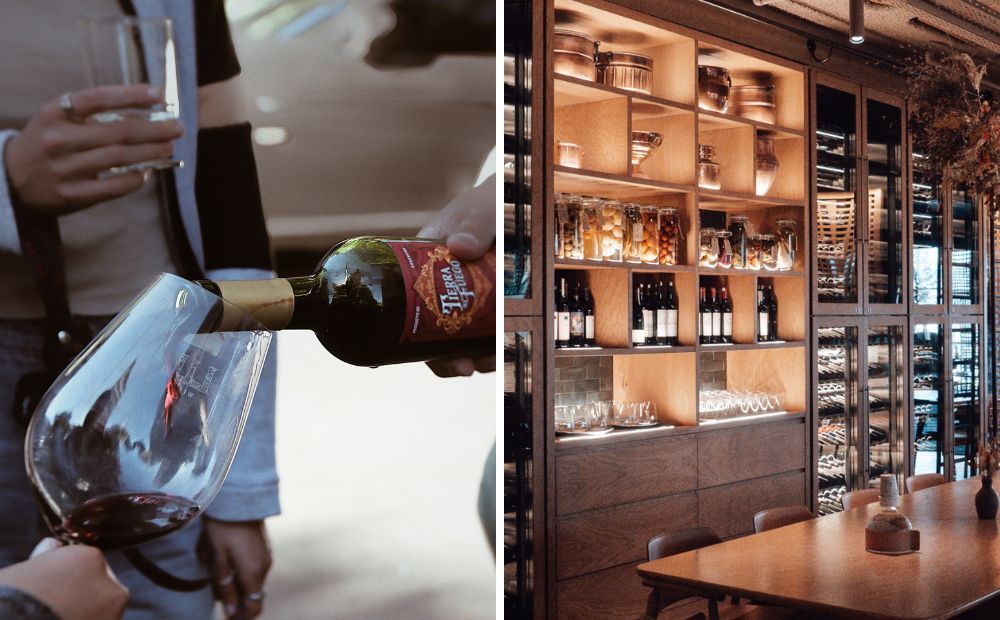
While maintaining the perfect wine fridge temperature is crucial for storage (keep it within a range of 45°F to 68°F (7°C to 20°C)), it's also essential to know the difference between the serving temperature and storage temperatures for various wine types.
Serving temperatures greatly affect the taste and aroma of wine, so let's explore the ideal serving temperatures for red, white, and sparkling wines.
Red wines should be served at a temperature between 62-68°F. White wines should be served at a temperature between 49-55°F. Sparkling wines should be served at a temperature between 46.4-50°F.
Red Wine Serving Temperatures
Red wines should be served at 62-68°F (16-20°C) to bring out their fruity flavors and aromas. If stored in a refrigerator, allow the red wine to warm up for about 30 minutes before serving to reach the ideal temperature.
Conversely, if the red wine is stored at room temperature, place it in a standard fridge for 30 minutes to lower the temperature before serving.
White Wine Serving Temperatures

White wines should be served chilled, at 49-55°F (9-13°C). To achieve this temperature, you can store white wines in a wine cooler or dip them briefly in an ice bucket before serving.
This ensures that the crispness and freshness of the white wine are maintained, enhancing your wine experience.
Sparkling Wine Serving Temperatures
Champagne and other sparkling wines should be served between 46.4°F and 50°F (8-10°C). To achieve this temperature, use a wine fridge or an ice bucket to chill the wine.
Avoid storing wines using a freezer or pre-chilled gas, as this can negatively affect the wine's quality.
👉 Related Reads: How Cold Does a Wine Fridge Get, Wine Fridge vs Wine Cooler, How to Drink Wine, Dual Zone vs Single Zone Wine Coolers, White Wine Temperature, Red Wine Temperature, How to Tell if Wine is Bad, How to Serve Wine Properly, How to Decant Wine, Storing Wine at Home, How to Choose a Wine Fridge
Frequently Asked Questions
What temperature should my wine fridge be set at?
For optimal storage of your wines, the temperature should be set between 45°-65° Fahrenheit. This range ensures that you have a balanced environment to preserve wine in short and long-term storage. Setting the temperature within this range allows you to ensure proper wine storage so that your collection remains safe and sound for years to come.
To ensure the longevity of your wines, it is important to set the temperature of your wine fridge between 45°-65° Fahrenheit. This range provides the best environment for preserving your wine bottles and allows them to remain in top condition for an extended period of time.
Is 50 degrees too cold to store wine?
Fifty degrees is not ideal for long-term wine storage and may lead to negative impacts on the quality of the wine. It is advised that you store your wine at 45-65 degrees Fahrenheit with the ideal temperature range being between 50-60 degrees for best results.
What is the best temperature to store wine?
For optimal storage of your favorite wines, aim to keep them at a consistent temperature between 55 and 57 degrees Fahrenheit. Humidity is also important—for best results, the relative humidity should be somewhere between 50 and 80 percent.
When it comes to wine storage, the ideal temperature is between 45°F-65°F and a humidity level of 70%. Making sure these two factors are in the right range will ensure that you get the most out of your favorite wines.
What temperature and humidity should a wine fridge be at?
For optimal wine storage, the temperature should be set to 55°F (12.8°C) and the humidity should be set between 50-70%. Maintaining these levels will help protect your wines from spoilage and oxidation over time.
What temperature should red wine be stored?
When storing wine, it is important to maintain the right temperature and humidity level. Ideally, red wine should be stored at temperatures between 45-65 degrees Fahrenheit and 70 percent humidity to ensure its optimal taste and longevity.
Summary
In conclusion, understanding the importance of the wine fridge temperature and knowing how to maintain the perfect storage conditions will not only preserve your wine collection but also elevate your wine experience.
By following our guide on wine fridge temperatures and practical tips, you'll become a true wine connoisseur, ready to impress your guests and indulge in the exquisite flavors and aromas of your carefully stored wines.
In search of a wine cooler? Explore our Best Wine Fridge recommendations to find the perfect fit for your unique requirements.
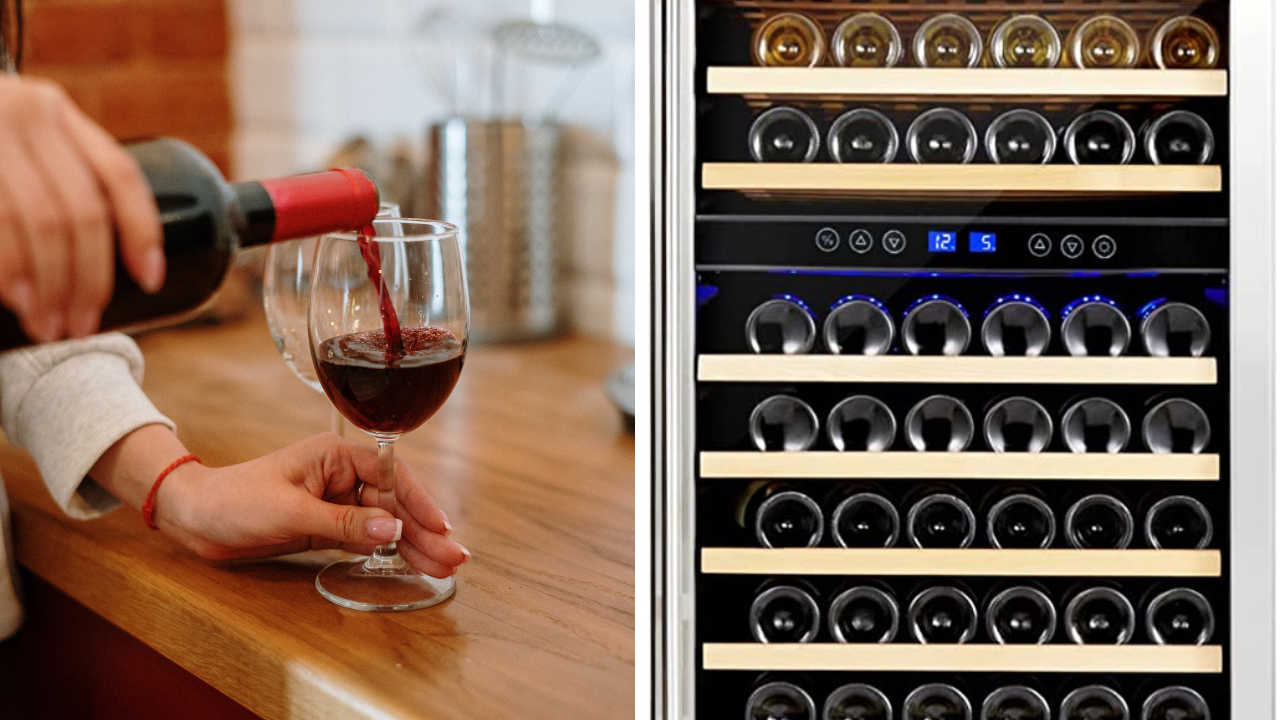
If you are tight on space, then check our our blog post on the Best Slim Wine Fridges.
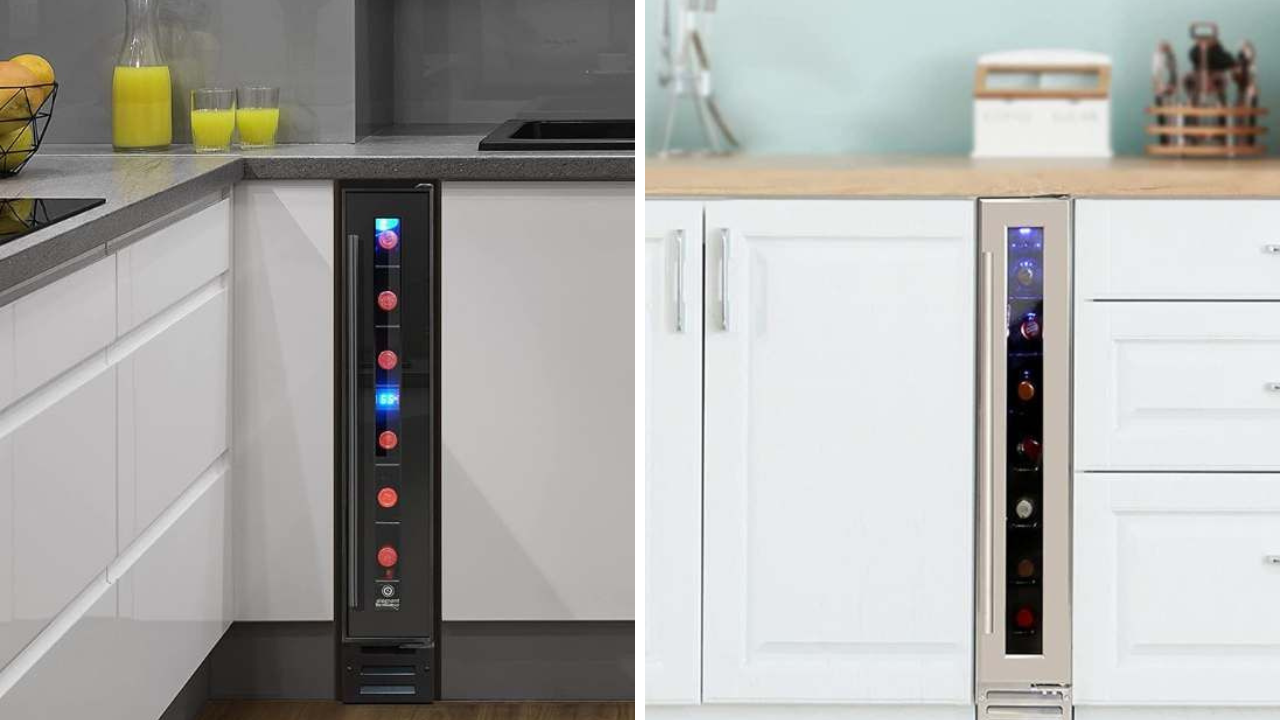
You may want to also check out our top picks for the best under counter wine cooler.
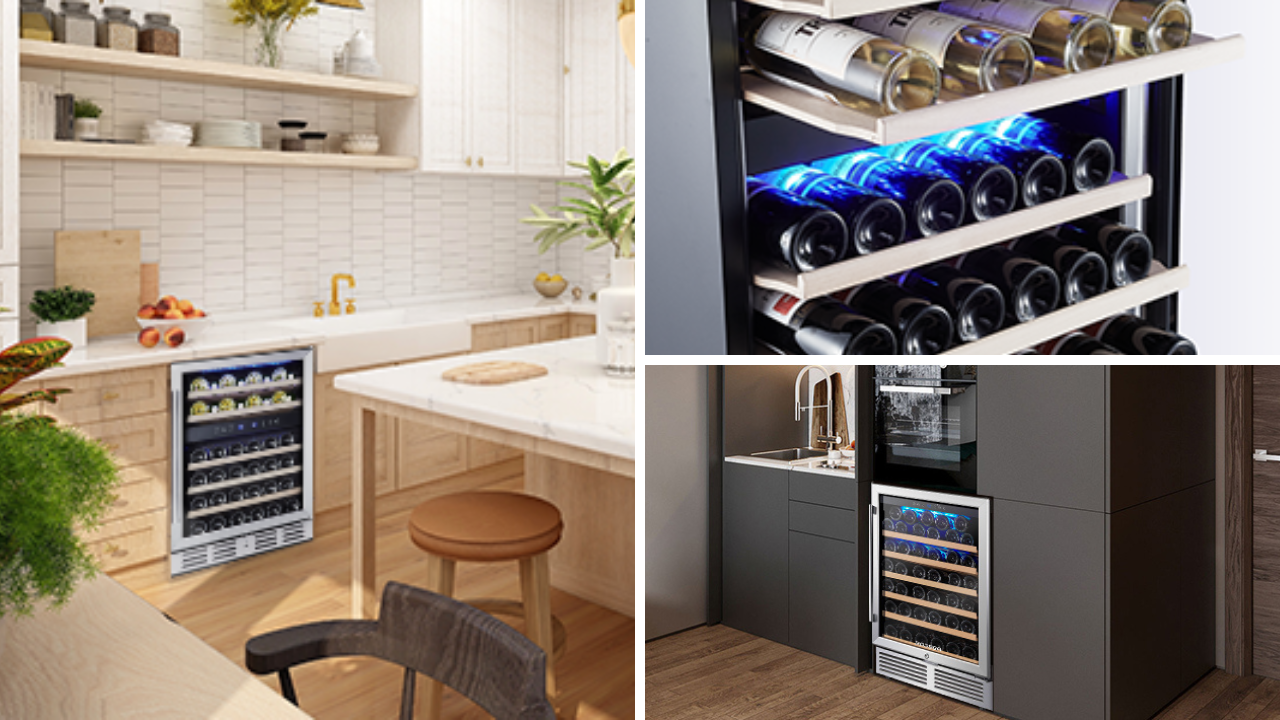
If you have a large wine collection then check out our article on the best large wine fridge.
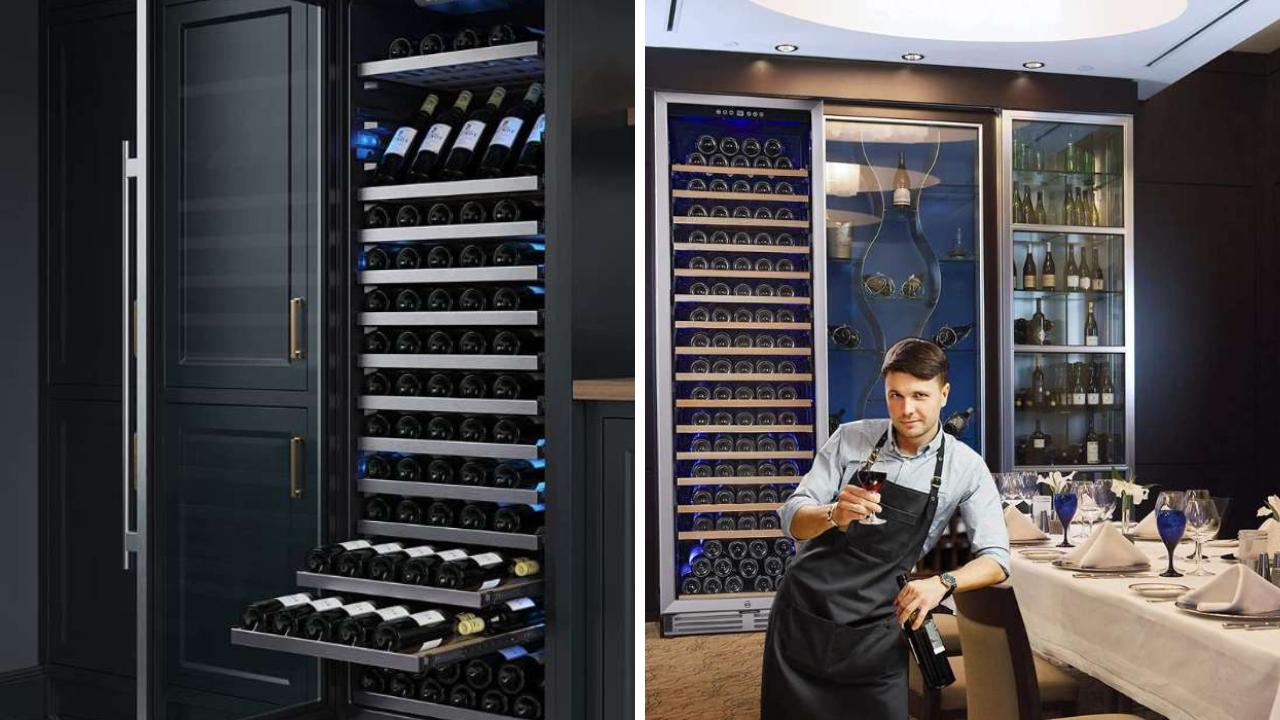
Cheers to mastering the art of wine refrigerator temperature!
IncredibleRatings










